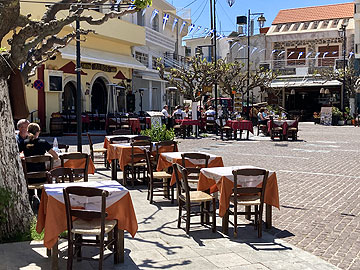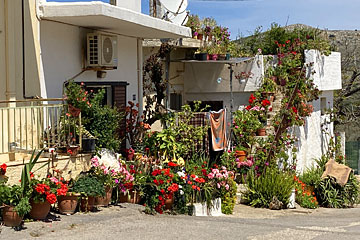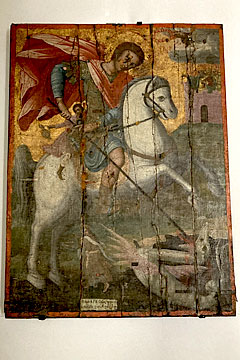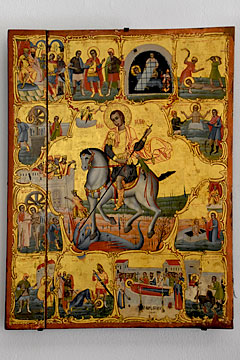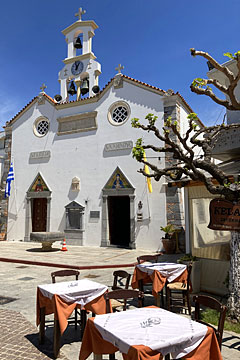

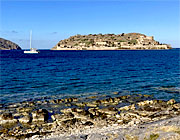
The tiny island of Spinalonga is an interesting, if melancholy, visit. The fertile Lasithi Plateau, a rural plain high in the central mountains, is well known for its produce.
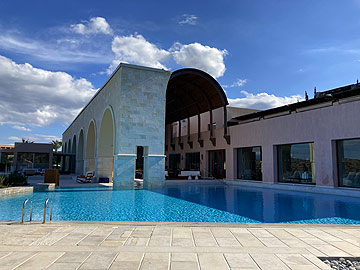
Crete is a huge island - the fourth largest in the Mediterranean at 8,261 sq km. On the eastern side we stayed at the beautiful Blue Palace just south of the tiny fishing village of Plaka.
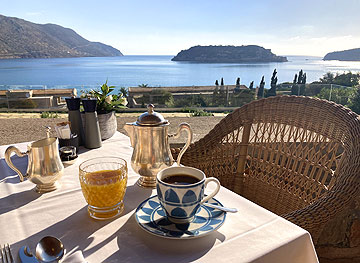
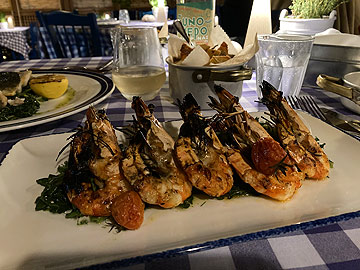
It's a lovely hotel, very bright and modern, on the coast. The first evening we were there, there was a celebration for the hotel's 20th anniversary, champagne and snacks on the terrace as the sun went down followed by fireworks. The home-made orange chocolates were excellent! We ate that evening at the Blue Door and it was very good: flat bread and tzatziki, sea bass and superb grilled prawns.
Breakfast is served at Anthos on its wide terrace overlooking the sea, if the weather is fine. We also had dinner in this restaurant but it was very poor. Service was extremely slow and we waited an hour after ordering before our food arrived. My sea bass was very good, though far too much for one, but Andrew's pork skewers were awful - the pork shoulder, cut into sections, flattened and rolled onto a skewer was flavourless, stringy and just not very nice. The carob chocolate cake was rather stodgy and the mango ice cream, while tasting good, was thick and heavy, as if gelatin had been added. All in all, not a success.
Dinner at Asian Blue was slightly disappointing - my tempura prawns were fine but the dip was too spicy and the Yakitori pork was only warm when delivered and rapidly became cold. Duck confit spring rolls were excellent, but the chicken lemon grass was rather bland.
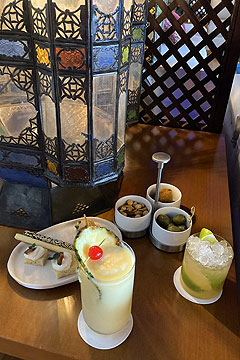
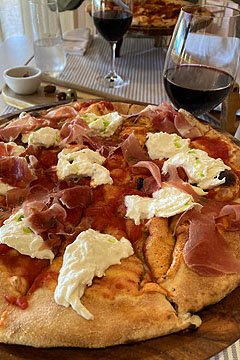
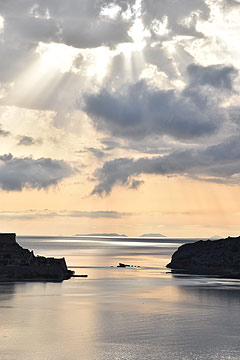
The view from the hotel terrace (and our room) was fabulous, out to sea and the island of Spinalonga.

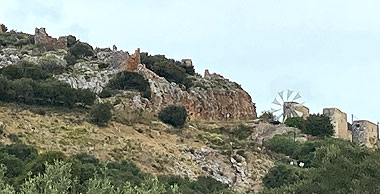
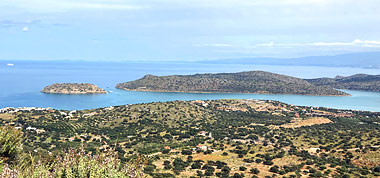
Leaving the main road from Heraklion to take the country road to the hotel we passed typical windmills and drove slowly - a necessity in the narrow, winding streets - through tiny villages including Kastelli and Fourni, eventually coming to a point high above the ocean and a descent to the hotel.
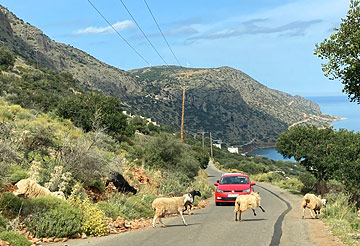
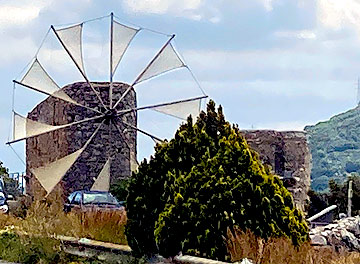
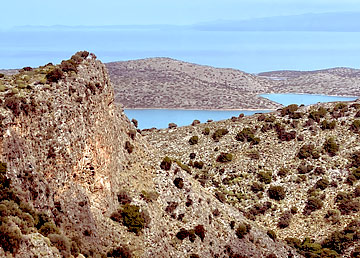
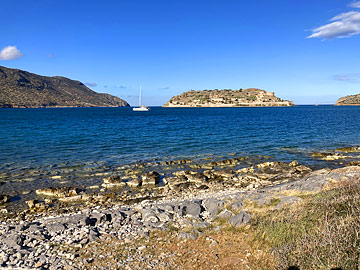
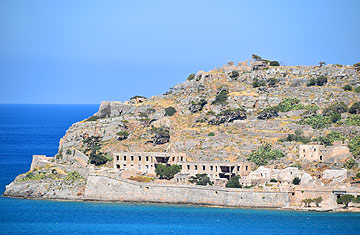
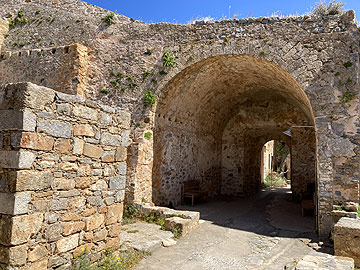
The hotel speedboat took us out to this tiny island, only 2 minutes away. Crete was a Venetian colony from 1209-1669 when the Ottomans ousted them, though the Venetians retained control of Spinalonga for another 150 years. The Venetians began the construction of the fortress on tiny Spinalonga in 1579 - essentially the whole island became a defensive structure, surrounded by a wall round the coast.
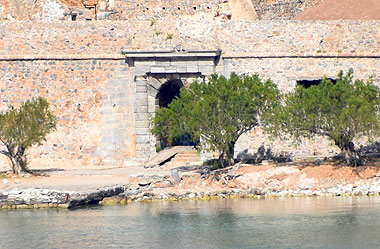
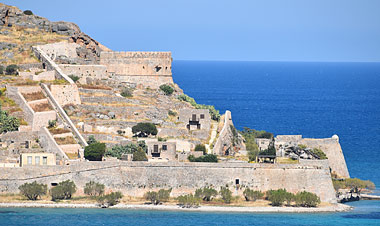
Crete became autonomous in 1898 and united with the rest of Greece in 1913.
Between 1913 and 1957 Spinalonga was a leper colony, the inhabitants living within the ancient walls of the fortress, building their village, marrying and having children, though healthy babies were taken to an orphanage on Crete.
The entrance to the fortifications from the boat dock leads to a walled inner enclosure, entered through the Carbonana Gate, where there are an Ottoman era market place, houses, dormitories for the lepers, churches and a cemetery.
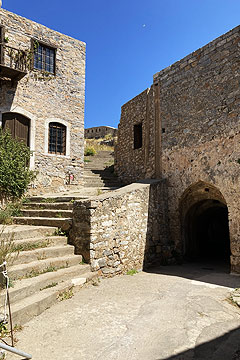
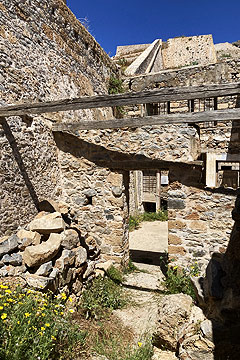
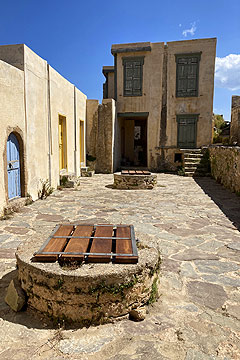
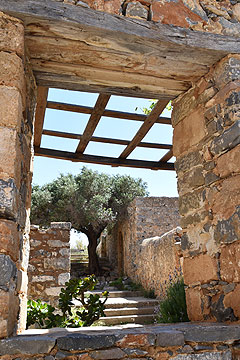
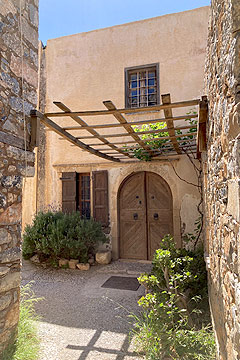
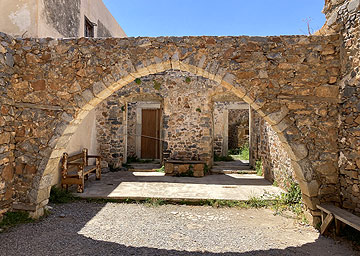
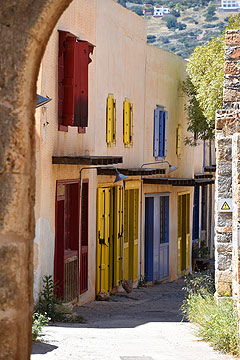
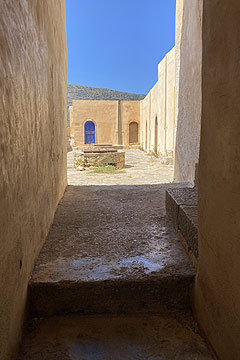
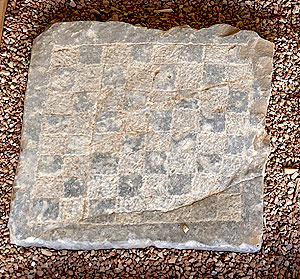
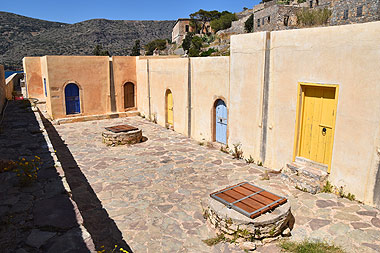
Game boards have been found scattered among the living areas of the island, inscribed on rock or stone surfaces. So far 81 game boards have been found: Draughts, Nine Men's Morris, Tropa, where the players attempt to throw their counters into holes, and Ludus Latrunculorum or the Soldiers' Game, played on a board similar to the draughts board but none of the squares were coloured. The aim is similar to draughts too, to remove your opponents counters form the board, but in this game that is achieved by placing a counters on either side of your opponent's counter, either horizontally or vertically.1
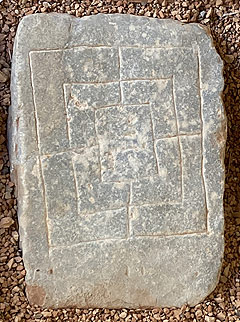
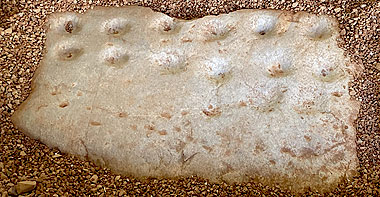
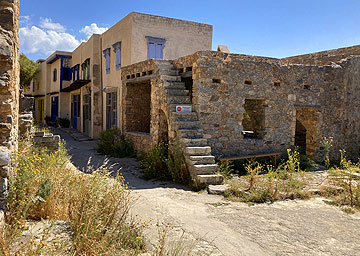
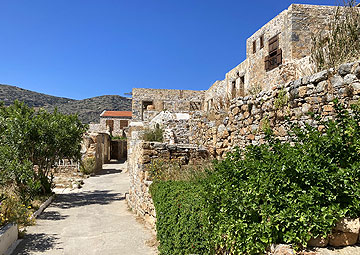
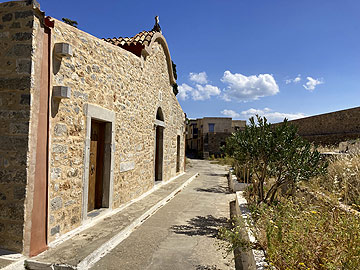
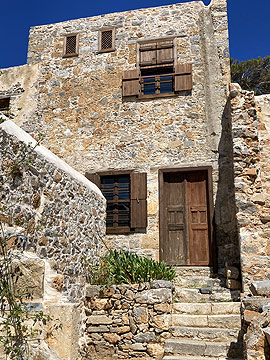
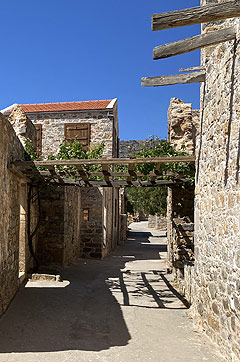
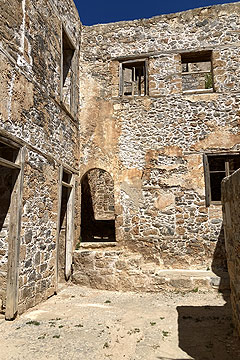
The village looks as though it would have been a very nice, peaceful place to live. Houses cluster around small courtyards and shade is provided in places by plants scrambling across overhead timber trellises. The two large dormitories for lepers may not have been so congenial.
Craftsmen and farmers were among the inhabitants, though they probably didn't grow much of their own food.
There were no medical facilities on the island, only a doctor who made infrequent visits.
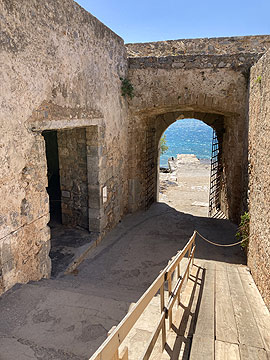
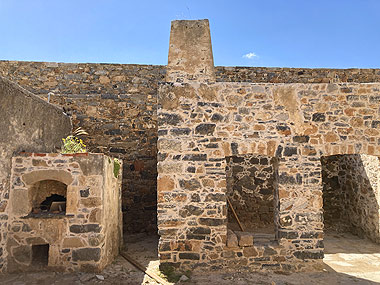
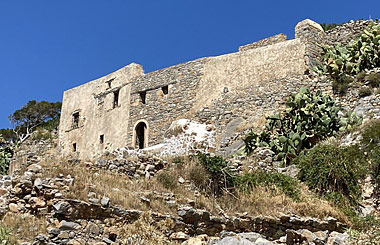
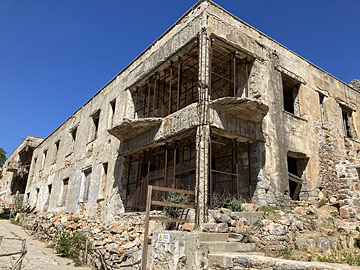
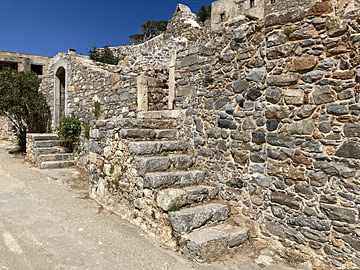
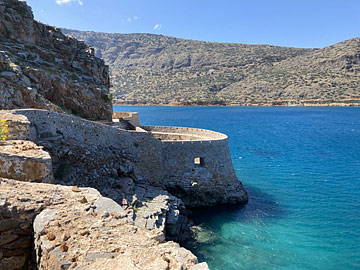
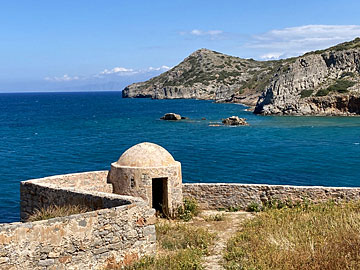
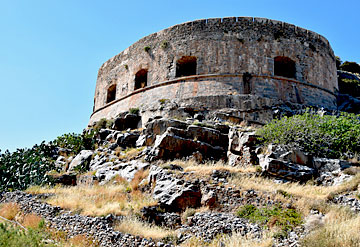
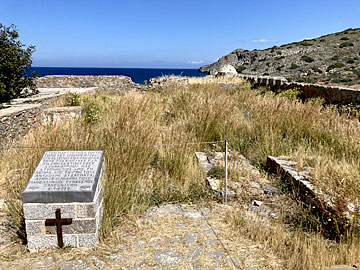
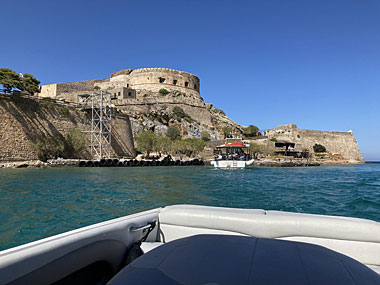
It's an interesting, if rather melancholy, place to visit. We walked all around the island, it's an easy route of about 1km, though there's not much shade. When we'd finished we called for the motor boat which speedily came to pick us up - very civilised.
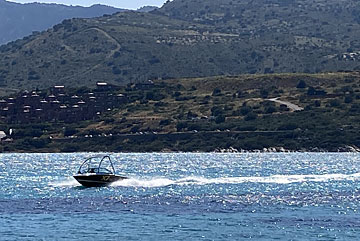

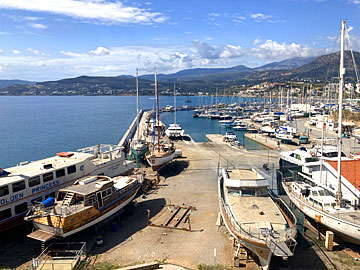
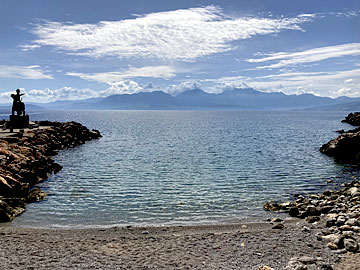
50 years ago this was a small coastal town with few visitors. Now it is unrecognisable with many hotels and vast numbers of tourists in the summer months.
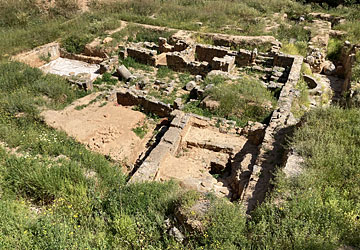
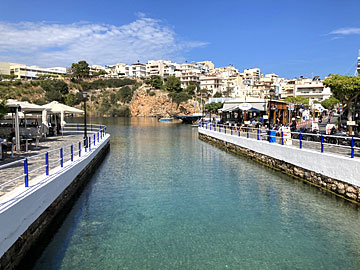
We walked through the town but, for us, there is no great attraction to this tourist spot.
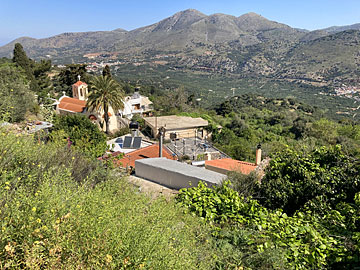
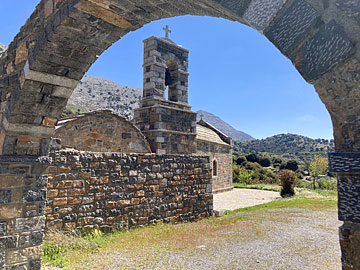
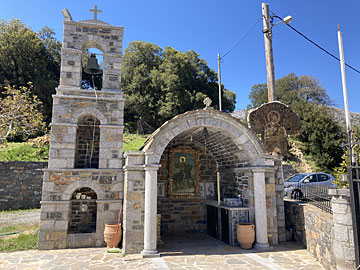
We explored the region of the Lasithi plateau as we moved from staying on the east coast to our next hotel near Chania. The plateau is around 50 sq km of fertile soil, evident in the many orchards just coming into bloom.
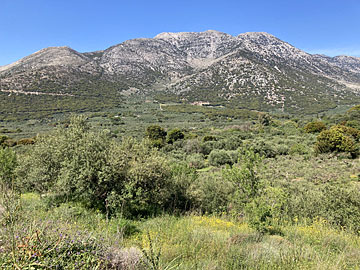
We paused at the tiny church of Agios Nikitas on the way to the plateau, standing in a swathe of wildflowers with its bell tower and shrine off to the side near the arched entrance.
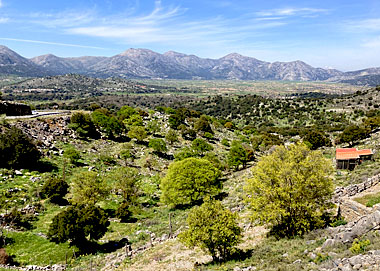
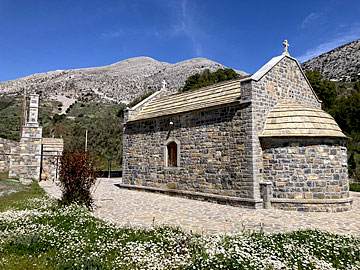
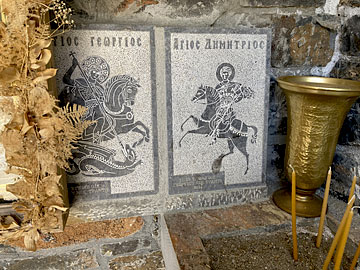
None of the villages we passed through, such as Agios Georgios, were particularly attractive; very much working villages with, at best, a central square with a cafe.
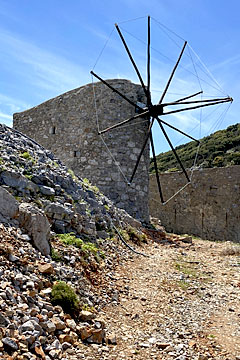
Leaving the plateau on the north side we climbed to the Ambelos Pass where an impressive array of windmills still stands, some renovated, most in a state of disrepair. At one time the plain was covered with thousands of windmills, used to draw the groundwater up to irrigate the crops. Now they have mostly been replaced by motorised pumps.
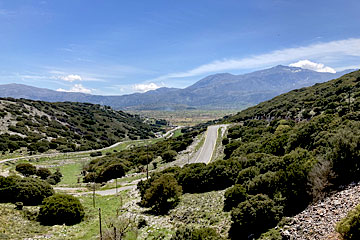
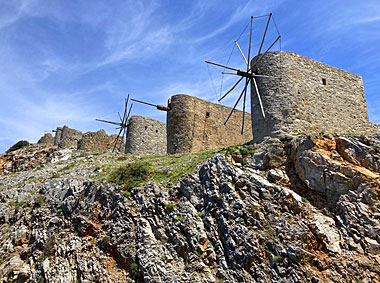
At the pass we had a very good meal at the restaurant next to the windmills. Very good pork roast served with potatoes from the plateau and a half litre of wine, though I didn't have much of this as I was driving.
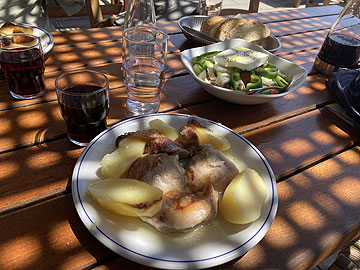
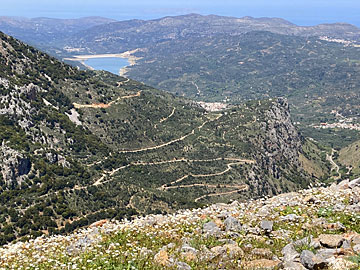
Lunch also came with a Greek salad with cheese. When we'd finished they served lovely apple cake and raki.
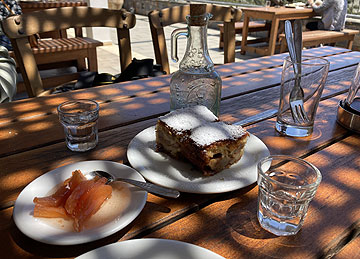
The roads around here are fun to drive when there's not too much traffic.
We stopped at Mochos, an inland village with a large pleasant square, before the long, and what turned out to be rather gruelling, drive to Chania, due mainly to lack of dual carriageway and road works.
